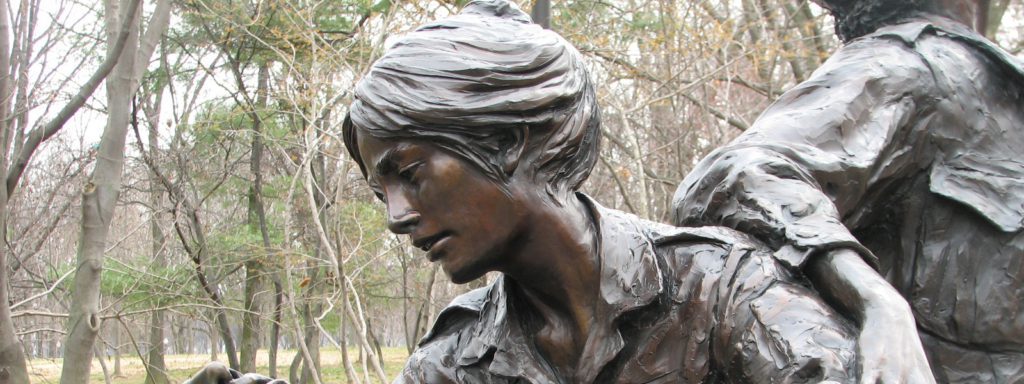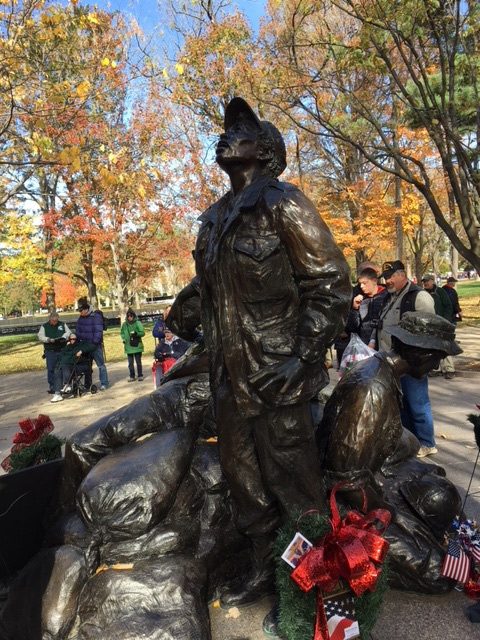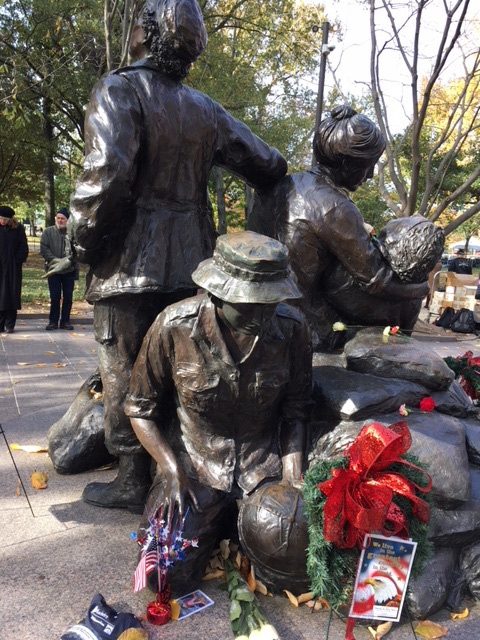It was August 1983 when Diane Carlson Evans, RN first presented the idea of building a memorial to honor the women who served in Vietnam. What followed was a ten-year journey of highs and lows until the bronze statue of three nurses caring for a wounded soldier was finally erected in November 1993. Today, the Vietnam Women’s Memorial stands among the sculpture of “The Three Soldiers” and “The Wall” of the Vietnam Veteran’s Memorial in Washington, DC. But getting to this point was not easy. Due to the attitudes about women in society at the time—and about the Vietnam War in general—many thought the project would never see the light of day.
Evans served in the Army Nurse Corps from 1966 until 1972, and in Vietnam from 1968 to 1969.
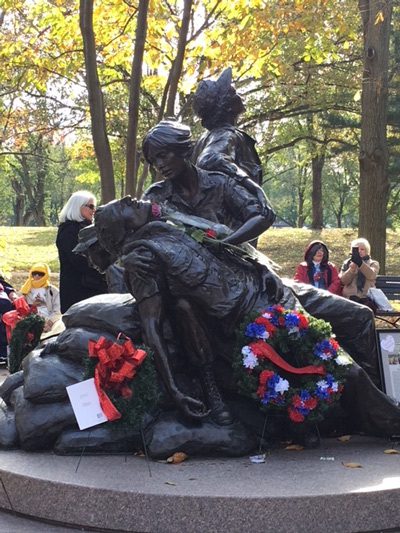
People from around the country visit the site for Vietnam: In Their Own Words, a storytelling event that takes place bi-annually at the Women’s Vietnam Memorial on Memorial Day and Veteran’s Day. On November 11, 2017—Veterans Day—Evans and her longtime friend, and Vietnam hoochmate (roommate), Edie McCoy Meeks, stood adjacent to the statue in the brisk cold—and recollected wartime stories to an enthralled crowd of spectators. Various speakers also took to the microphone and shared their thoughts and reflections.
Evans, who hosted the program, spoke of how daunting the approval process was, but how fighting for the recognition of the contributions of the women who served during wartime was worth it.
Evans recalled how her husband encouraged her to spearhead the efforts when she realized there was a noticeable piece of history missing. Evans said that when the Vietnam War Memorial was initially dedicated in November 1982, she was elated that her veteran brothers were getting acknowledgment, but wondered why the women—namely the military nurses and civilian volunteers from organizations like the American Red Cross that treated patients throughout the war—weren’t represented.
Evans wrote in the official welcome for the dedication of the memorial in 1993, “With the dedication of ‘The Wall’ and addition of the statue of three servicemen, I strongly believed that the families who lost loved ones in the war would want to know about the women who provided comfort, care, and lifesaving measures for those who were suffering and dying.”
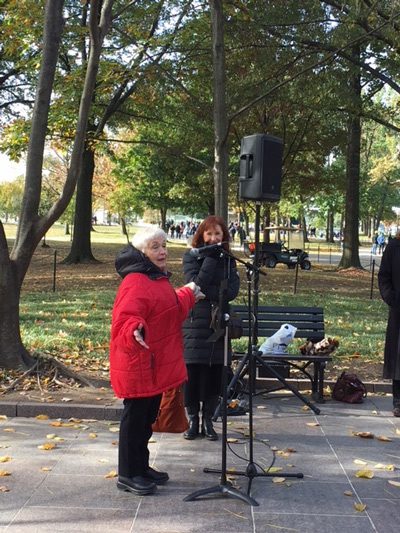
Edie McCoy Meeks (speaking) and Diane Carlson Evans, RN host storytelling program “Vietnam: In Their Own Words,” this past Veterans Day (November 11).
She also reported that approximately 11,000 American military women were stationed in Vietnam during the war. The names of the eight military women who lost their lives are inscribed in “The Wall” on the grounds of the Vietnam Veterans Memorial.
“Close to ninety percent were nurses in the Army, Navy, and Air Force. Others served as physicians, physical therapists, personnel in the Medical Service Corps, air traffic controllers, communications specialists, intelligence officers, clerks, and in other capacities in different branches of the armed services. Nearly all of them volunteered,” Evans said. Nurses and Red Cross employees took care of wounded soldiers, and were also responsible for treating Vietnamese children that were injured in the crossfire.
The Vietnam Women’s Memorial Project received support far and wide, but was met with fierce opposition from those that felt the memorial was unnecessary.
This led to what Evans referred to as a “long and arduous” process that included the passage of two separate pieces of legislation and approval of three federal commissions. In the welcome, Evans said that her team experienced the same “controversy, rejection, unrelenting challenges and foes,” and ‘nightmares’ as the founders of the Vietnam Veterans Memorial. But conflict was not unfamiliar to Evans and the many veterans who helped champion this cause. “We were used to fighting for each other and for our country.”
In 1987, the US Commission of Fine Arts voted 4-1 against the women’s memorial. Evans recalled the head of the Commission reasoning, “If the women get a memorial, then the Canine Corps will want theirs.”
This position insulted the supporters of the project and stirred media attention, landing Evans and three other Vietnam nurses an interview with veteran journalist Morley Safer. The interview actually reunited a Vietnam veteran with his nurse. In addition to that, in what Evans refers to as a turning point, financial support for the project flooded in, and they raised over $2 million for the memorial.
According to Evans, many supporters around the country embraced the idea of a memorial to honor the women that served. In her thanks, Evans expressed gratitude to “veteran brothers who sent in their entire disability checks,” “children who sent one dollar bills,” and many other contributors who sent well wishes and other forms of support.
Despite the difficulty in getting the project off the ground, since its conception, the memorial has changed lives.
“The Vietnam Women’s Memorial was established not only to honor those women who served, but also for the families who lost loved ones in the war, so they would know about the women who provided comfort, care, and a human touch for those who were suffering and dying.”
